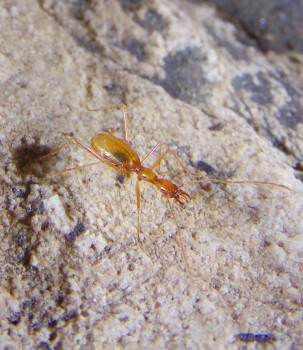Biology in caves
Caves are inhospitable places for most living creatures. as they are devoid of light and consequently have little food to offer. However caves host a variety of species adapted to this extreme habitat. Most of these species are very rare and can be a valuable scientific resource for the reconstruction of past climates and geological habitats. The caves in Sardinia have proven to be an endless source of new discoveries of species showing a high concentration of endemic species. Being an Island and featuring fragmented karst systems, Sardinia is one of the most important biodiversity hotspots in Europe.
During their stay underground, the cavenauts search for fauna and collect specimen in different places of the cave where unknown species might be found.
Operational scenario
Participants are asked to collect cave fauna by direct sampling – without using bait – aided by forceps, an aspirator (also known as a pooter), a paintbrush and so on. Only unknown or interesting species are sampled and sent to specialists all over the world for studies. Cavenauts need to collect data about a sampling spot and sampled animals, which are recorded in their fieldbook and data sheets.
In one specific site, drip water is collected and sampled for biological analysis of microscopic crustaceans.
Things to keep in mind
Before setting off on this venture the experts remind the cavenauts that cave animals have no pigment, are blind, come often with long appendices and some species are extremely fragile. During sampling extreme care is required to avoid damaging their body and appendices. This means using the most suitable tools to collect the animals. Only specimens explicitly requested by scientists are collected to preserve the cave environment as best as possible.
Finding new cave species is a difficult job and it can take a long time: movements of the stones or simply a person’s breath can cause small, invisible animals to move and become visible after several minutes. They often hide underneath stones and in cracks, or wander around on wet walls so it is important not to forget to look in hidden places too.
Prof. Jo De Waele, University of Bologna, CAVES science coordinator
Dr. Paolo Marcia, University of Sassari, scientist responsible for the CAVES biology experiments




Discussion: no comments